A LOOK AT THE WORLD BEHIND
A MOMENT IN THE SUN
BOOK ONE
GOLD FEVER
“Hod is the first on deck to see smoke…”

The Utopia. Alaskan Steamship Co., built in Seattle, 1893, Capt. Johnny O’Brien.

Men boarding the City of Portland in Seattle, heading for the gold fields.

Dyea, Alaska Territory. Stampeders unloading supplies.

A street in Dyea, Alaska, cir. 1898. Photograph courtesy of the Special Collections Division, University of Washington Libraries.

The Healy and Wilson trading post, sometimes called “the oldest store in Alaska.” The principal outfitter in Dyea.

Lunch break on the trail from Dyea.

Men on the trail.

Sheep Camp, August 1897. Jack London is believed to be the young man in the group on the right, second from left.

Stampeders near Sheep Camp on the Chilkoot trail. 1897.
cheechako: “Newcomer,” in Chinook Indian trade jargon.

Promotional postcard for stampeders.

Map showing the Chilkoot Trail.

The Scales and the Golden Stairway.

Ascending Chilkoot Pass in the winter of 1898.

Climbing. Note the chutes on the right.

Stampeders and their goods at the Chilkoot Pass boundary line.

Canadian Police checkpoint, Chilkoot Pass.

Canadian Mounties in the Yukon, 1900.

Stampeders pulling dead miner off the Chilkoot Pass, 1898.

Making boats, Lake Bennett.
LIGHTNING
“There is some folks say the pine air is good for you but Clarence is not one of them…”

Pine-scraper and woods rider.


Prison laborers at a turpentine camp.


Turp barrels at McLeod’s turpentine camp on the Ochlockonee River.
carolina special: A train, powered by a green-and-gold-trimmed steam locomotive, which ran from Charleston, SC to Cincinnati, OH. It consisted of mail and baggage cars, coaches, a diner and Pullmans. In 1904 the Carolina Special collided head-on with a local train in New Market, Tennessee. More than one hundred people were killed.
FORT MISSOULA
“The only part that bothers Royal is when the doctor sits on the stool to stare into the hole in the head of his pizzle…”
fort missoula: Fort Missoula was established by the United States Army in 1877, on land that is now part of the city of Missoula, Montana, in order to protect white settlers in Western Montana from possible threats from the area's Native American tribes (such as the Nez Perce). Beginning in 1888, the fort was home to the Buffalo Soldiers of the 25th Infantry Regiment. While stationed at Fort Missoula, the 25th Infantry tested the practicality of soldiers traveling by bicycle by conducting numerous training rides, including one that took them all the way to St. Louis, Missouri. Fort Missoula was turned over to the Department of Immigration and Naturalization in 1941 for use as an alien detention center for non-military Italian men (merchant seamen, World's Fair employees, and the crew of an Italian luxury liner seized in the Panama Canal). At one time the fort housed over 1,200 Italian internees, who referred to the fort as “Camp Bella Vista.”

Fort Missoula, cir. 1900.

Officers’ quarters and barracks, Fort Missoula.

View of the fort from across the Clark Fork River.

The 25th Infantry elsewhere in Montana, at Fort Keough.

The 25th at Fort Missoula.
sprunt’s: James Sprunt was a textile magnate in Wilmington, NC, who with his brother William owned the largest cotton-brokerage firm in the U.S. at the turn of the century. He had been a purser on the Confederate blockade-runner Lilian during the Civil War.


James Sprunt (front, center) with his staff.
hampton institute: The Hampton Normal and Agricultural Institute was founded in 1868 by General Samuel Armstrong. He was interested in moral training and a practical, industrial education for Southern blacks. Hampton received much of its financial support in the years following the Civil War from church groups and former officers and soldiers of the Union Army. One of the many Civil War veterans who gave substantial sums to the school was General William Jackson Palmer, a Union cavalry commander and Quaker from Philadelphia, who later built the Denver and Rio Grande Western Railroad and founded Colorado Springs, Colorado.
IN THE TEMPLE
“In the last few years it has been the Italians, Guglielmo Tell mostly, or Un Ballo in Maschera, or something new by Puccini…”
bundoks: Tagalog word for “mountains.” Became corrupted by American soldiers into “boondocks”—any distant posting.
the intramuros: Located along the southern bank of the Pasig River, the Intramuros is Manila's oldest district, having been built by the Spaniards in the sixteenth century. Its name means “within the walls”; the district is surrounded by thick, high walls and moats. During the Spanish colonial period, the Intramuros was considered Manila itself.

The Santa Lucia Gate of the Intramuros.

Old bronze cannons at the Intramuros.


Spanish map of the Intramuros.
teatro zorilla: The Teatro Zorilla was located at the corner of Calle San Pedro (now Evangelista) and Calle Azcarraga (now Recto) in Manila. Many Italian companies performed at the Zorilla, which closed during the early years of the Philippine-American War, but soon reopened, often presenting seditious zarzuelas to protest American rule.
katipunan: The Katipunan was a Philippine revolutionary society founded by anti-Spanish Filipinos in Manila in 1892. Initially, the Katipunan was a secret organization; its discovery in 1896 helped lead to the outbreak of the Philippine Revolution.
dr. rizal: José P. Rizal (1861-1896) was the leading advocate for reform in the Philippines during the Spanish colonial era. He was an accomplished linguist, ophthalmologist, sculptor, painter, educator, farmer, historian, playwright, journalist, poet, essayist, and novelist, whose most famous works are the novels Noli me Tangere (1887) and El Filibusterismo (1891), which inspired dissent among reformers and revolutionaries. On his return to Manila from university in Europe in 1892, Rizal founded La Liga Filipina, a predecessor of the more radical Katipunan. The league advocated moderate social reforms through legal means, but was quickly disbanded by the governor. Rizal had already been declared an enemy of the state because of the publication of his novels, and in 1892 he was exiled from Manila. In 1896, as the rebellion fomented by the Katipunan became a full-blown revolution, Rizal issued a manifesto disavowing the unrest and declaring that the education of Filipinos and their achievement of a national identity were prerequisites to freedom. He volunteered to serve the Spanish Army as a physician in Cuba, but instead he was arrested and sent to Manila to stand trial. On the morning of December 30, 1896, Rizal, thirty-five years old, was shot to death by a firing squad at Bagumbayan Field.
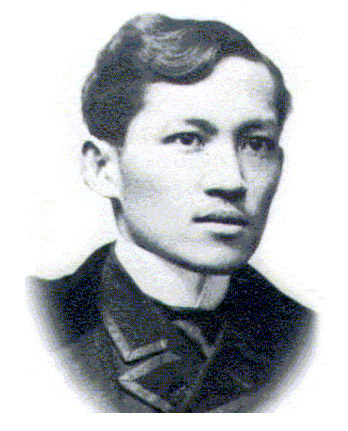
José Rizal.

Rizal's execution.

The traditional Philippine balintawak costume consists of wide-arched sleeves and colorful material. There is a panuelo (handkerchief) on the shoulder.

A group of young, upper-class Filipinos.

Two Spanish women and an upper-class Filipina in Manila, 1890s.


A Katipunero's cedula and a skull used in Katipunan initiation rites.
hermano terrible: In the Masonic order, the hermano terrible is the man who guides a neophyte through his initiation ceremony. Emilio Aguinaldo, Andrés Bonifacio and José Rizal were all Freemasons.
ateneo: The Ateneo de Manila University is a private Jesuit-run university in Manila. It was created in 1859, when the City of Manila handed control of the Escuela Municipal de Manila to the Jesuits. After the U.S. began to occupy the Philippines in the early 1900s, the Ateneo lost its government subsidy and became a private institution.

The Ateneo de Manila, cir. 1900.
correo de ultramar: A radical Manila newspaper.
the hero of paombong: Gregorio del Pilar y Sempio (1875-1899) was the second youngest general in the Philippine Revolutionary Forces during the Philippine Revolution and the Philippine-American War. On September 3, 1897, del Pilar disguised himself and ten other soldiers as women, entered the town of Paombong unhindered, attacked the Spanish garrison, and confiscated fourteen Mauser rifles. This feat caught the attention of General Aguinaldo, who invited del Pilar to join the circle of revolutionary leaders camped at Biak-na-Bato. When the Philippine-American War broke out on February 1899, del Pilar led his troops to a short victory over Major Franklin Bell in the first phase of the Battle of Quingua, but subsequent engagements against the Americans all ended in defeat. On December 2, 1899, del Pilar led sixty Filipino soldiers against the Texas Regiment (the 33rd Infantry Regiment) in the Battle of Tirad Pass, a delaying action to cover a retreat by Aguinaldo. The five-hour standoff resulted in del Pilar's death after he was shot in the neck.

Gregorio del Pilar.
SKAGUAY
“Hod is working on the wagon road three miles out of skaguay, felling trees and dragging logs through the mud with a chain rig, when a dude strolls up with the road boss…”

Skaguay during the Gold Rush. The name of the town was spelled “Skaguay” by its founders, but the post office began to spell it as “Skagway” in 1899.

Skaguay, 1898.

Skaguay’s main street.

The wagon road being examined by its builder, George Brackett. Brackett was a former mayor of Minneapolis who joined the Gold Rush in 1897.

A muddy Skaguay street.

(Courtesy of the Soapy Smith Preservation Trust.)


Miners in Alaska.


Jeff Smith in his Parlor. Jefferson Randolph ("Soapy") Smith II (1860–1898) was a con man who operated in Colorado and Alaska from 1879 to 1898. During the Spanish–American War, Smith formed his own volunteer army with the approval of the U.S. War Department.
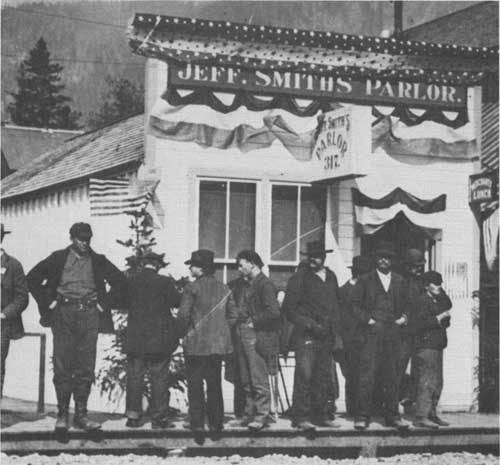
The Parlor in the spring of 1898.
(Courtesy of the Soapy Smith Preservation Trust.)

Creede, Colorado. Soapy Smith’s Orleans club was at the rear of the street, beneath the flag.
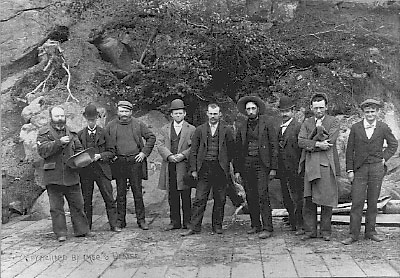
A photo thought to show several members of the Soapy Smith gang. Those who were not immediately arrested after Soapy Smith’s killing quickly left the Territory.
(Courtesy of the Soapy Smith Preservation Trust.)
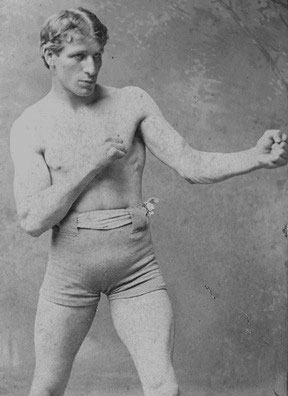
Chrysanthemum Joe Choynski (Ko-in-ski, 1868–1943). Choynski was an American boxer who fought professionally from 1888 to 1904. He weighed no more than 176 lbs throughout his career, but regularly fought heavyweights. On February 25, 1901, he faced and KO’ed the young Jack Johnson in three rounds in Texas. The two were then arrested for engaging in an integrated bout.

Joe Choynski in jail with Jack Johnson.

Charles "Kid" McCoy (born Norman Selby, 1872–1932). McCoy, noted for his corkscrew punch, captured the world middleweight championship by defeating Don Creedon. McCoy never defended the title, choosing to abandon the crown in order to pursue the world heavyweight championship. Despite his size, McCoy battled the best heavyweights of his era, and defeated Joe Choynski, Gus Ruhlin, and Peter Maher. He was defeated by Tom Sharkey and Jim Corbett. McCoy was married ten times, performed in theater, and eventually went west to California, where he appeared in films and became friends with Charles Chaplin and D.W. Griffith. In the early 1920s, McCoy was involved in a romance with a wealthy married woman, Teresa Mors; she filed for divorce from her husband, but the divorce proceedings dragged on until she was killed, in the apartment she shared with McCoy, by a single gunshot to the head on August 12, 1924.The next morning, McCoy robbed and held captive some twelve people at Mrs. Mors’s antique shop. McCoy was ultimately apprehended and charged with murder. He was convicted of manslaughter.

Peter "Black Prince" Jackson (1861–1901) was born in Saint Croix, Danish West Indies. Working as a deck hand in the Sydney Docks, he won the Australian Heavyweight championship in 1886 with a knockout of Tom Leeds, and the British Commonwealth title with a knockout of Jem Smith. On May 21, 1891, Jackson fought James Corbett for sixty-one rounds before the bout was declared no contest.
(Courtesy of the Soapy Smith Preservation Trust.)

Creede’s list of notorious characters included the gambler Bob Ford, the killer of Jesse James. Soapy Smith ran an extortion racket out of the Orleans Club in Creede, and had a cut of every gin joint, bawdy house, and gambling casino in town.
(Courtesy of the Soapy Smith Preservation Trust.)
A SHAVE AND A HAIRCUT
“White folks’ hair is easy…”

Barbershop, 1900.

Colonel Alfred Moore Waddell. Waddell was born on September 16, 1834, in Hillsborough, North Carolina. During the Civil War, he joined the Third North Carolina Cavalry, but plagued by bad health, he resigned in August 1864 and returned to Wilmington. After the war, Waddell was elected to congress on the Conservative–Democratic ticket in 1870, 1872, 1874, and 1876.
governor russell: Governor Daniel Lindsay Russell, Jr. (1845–1908) was the Republican governor of North Carolina from 1897 to 1901. In the 1898 election, Russell and the Republicans joined with the Populists in a combined fusion party, but the persistent and effective white-supremacy campaign waged by the Democrats drowned out nearly all other issues. Russell, who had served as a captain in the Confederate Army during the Civil War, issued a proclamation criticizing attacks associated with the Red Shirts and calling for a peaceful election. On November 8, he traveled home to Wilmington and cast his ballot without incident, but he barely made it back to Raleigh. A group of armed Red Shirts boarded the train at Hamlet looking for the governor, but Russell had been tipped off and was hiding in the baggage car.


the redeemers: The Redeemers were a political coalition in the South during the Reconstruction era. They were the Southern wing of the Bourbon Democrats, who were the conservative, pro-business wing of the Democratic Party. Once in power, they typically cut government spending, shortened legislative sessions, lowered politicians’ salaries, scaled back public aid to railroads and corporations, and reduced support for public education. They also worked to change voter registration rules to strip most blacks and many poor whites of their ability to vote.
scalawag: Scalawag was a nickname for Southern whites who supported Reconstruction following the Civil War. Joseph E. Worcester’s 1860 Dictionary of the English Language defined scalawag as "A low worthless fellow; a scapegrace." Scalawag was also a word for low-grade farm animals.

Little Carrie. Carrie Sadgwar, the daughter of a prominent Wilmington carpenter, was a musical prodigy who was awarded a scholarship to Fisk University, and became the leading soprano in Fisk's Mozart Society, with which she performed for Queen Victoria. She eventually married Alexander Manly in Washington, D.C.
COMMERCE
“Here's Soapy's other n-----…”

Captain Billy Moore. In June of 1887, Skookum Jim, a Tlingit packer from Dyea and Tagish, lead Captain Moore over a new pass to the Skaqua river valley. In October, Moore returned with his son, Bernard, to lay claim to 160 acres in the valley floor and begin work on a cabin and dock, calling the place Mooresville. Ten years later, the steamships Excelsior and Portland arrived in San Francisco and Seattle with the famed “Ton of Gold,” setting off the Klondike Gold Rush. On July 29, 1897, the steamer Queen landed at Moore's wharf, the first of many packed with gold seekers, and Moore’s claim was jumped by the passengers. Mooresville was quickly rechristened as Skaguay, Captain Billy retained possession of his dock and charged for its use.

“Arizona” Charlie Meadows (1860–1932), a Western rodeo legend. In 1882, when Meadows was twenty-one and away from the family ranch, a band of White Mountain Apaches broke out of the San Carlos Agency and formed a raiding party, eventually ambushing and killing his father John and wounding two brothers. When the Klondike gold rush began, Meadows organized a party of a dozen of his cronies and gathered two hundred feral burros from the Gila River bottoms, hoping to sell them for a good price when he got to Alaska. They lost a good deal of their goods on the way over the Chilkoot Pass, and Meadows settled in Dawson, where he built an opera hosue. He sold it in 1901 for $17,000, a third of what he had paid to build it, and ultimately died at Yuma in 1932, allegedly after operating on his varicose veins with his pocket knife.

Meadows's Palace Grand Theater, Dawson city.

Opening of opera house, Dawson.

Saloon, Dawson. Man at center is probably Charlie Meadows.

Billy Mizner. Wilson Mizner (1876–1933) was an American playwright, raconteur, and entrepreneur. He was manager and co-owner of The Brown Derby restaurant in Los Angeles, California, and was affiliated with his brother, Addison Mizner, in a series of scams and adventures that inspired Stephen Sondheim's Bounce. In 1897, Addison and Wilson, with brothers William and Edgar, traveled north to Alaska, where they spent their time bilking miners rather than looking for gold. Wilson operated badger games, managed fighters, allegedly robbed a restaurant to get chocolate for his girlfriend, and grub-staked prospector Sid Grauman, later of Grauman's Chinese Theatre fame. He also met Wyatt Earp, who became a lifelong friend.

Tex Rickard. George Lewis "Tex" Rickard was a former Texas marshal who, with a partner, was able to buy a half-interest in one of the claims on Bonanza Creek in the Yukon. They sold it almost at once, for twenty thousand dollars, and bought an interest in another, which sold for thirty thousand dollars. Rickard also promoted fights for the entertainment of the stampeders, starting a career that led him to become the greatest boxing entrepreneur of his day. In 1925, Tex secured the rights to promote live events from Madison Square Garden in New York; Rickard, Jack Dempsey, and Dempsey's manager Jack Kearns ultimately grossed $8.4 million in only five fights between 1921 and 1927.

Prostitutes at a “drinking bee,” Dawson.

Diamond Lil Davenport, Madam and Club Owner, Skaguay.
SOJOURNER
“Father, please forgive the tardiness of my correspondence, but we have been in transitu of late and the regular mail schedule is not in effect…”

Lt. James Moss as a West Point cadet. In 1894, Moss graduated at the very bottom of his class at West Point; given the lowest choice of assignments, he went to serve with the “colored 25th Infantry at Fort Missoula. He soon became interested in the idea of replacing the horse with the bicycle as the staple of military transport, an idea originally floated by General Nelson Miles. In 1896, Moss trained a squad of eight soldiers and took them on a 790-mile bicycle trek from Missoula to Yellowstone National park and back. The next year he took twenty soldiers from Missoula to St. Louis, a trip two-thirds of the way across the continent. He died in a taxi accident in New York City just after the attack at Pearl Harbor in 1941.
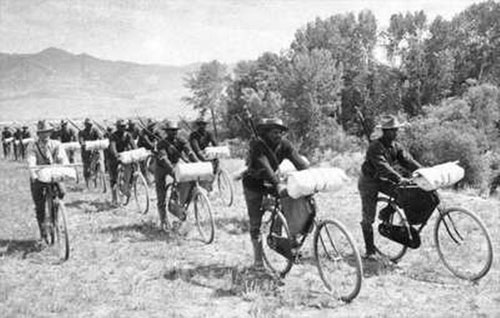
The Bicycle Corps.


General Nelson Appleton Miles (1839–1925). Miles entered the Union Army as a volunteer and fought at Fredericksburg, Chancellorsville, the battles of the Wilderness and Spotsylvania Court House, and in the Appomattox Campaign. Wounded four times in battle, he was awarded the Medal of Honor for gallantry in recognition for his actions at Chancellorsville. In 1866, Miles was appointed a colonel in the regular army, and later became commander of the 5th U.S. Infantry Regiment, playing a leading role in nearly all of the Army's campaigns against the tribes of the Great Plains. In 1890, the last uprising of the Sioux, known as the Ghost Dance, brought Miles back into the field, leading to the death of Sitting Bull and the massacre of two hundred Sioux at Wounded Knee. Miles was named Commanding General of the United States Army in 1895, a post he held during the Spanish-American War. After the surrender of Santiago de Cuba by the Spanish, he personally led the invasion of Puerto Rico.
sgt. mingo sanders: Mingo Sanders, born in Marion, SC, enlisted in the Army on May 16, 1881, and arrived in Missoula with Company B of the 25th Infantry in 1888. Partially blind from an explosion, he was the oldest and most experienced member of the Bicycle Corps at age 39. In the Spanish–American War, Sanders helped capture the Spanish-held fort of El Viso near El Caney, then served in the Philippines. He received the Medal of Honor after rescuing five American prisoners.
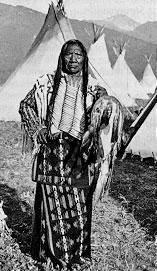
Chief Charlo (1830–1910). Charlo served as head chief of the Bitterroot Salish from 1870 to 1910, appointed upon death of his father, Chief Victor, a principal signer of the controversial Treaty of Hellgate in 1855. Though Charlo followed a policy of peace with the white settlers in Southwestern Montana and the soldiers at nearby Fort Missoula, in November 1891 he and a small remnant of the Bitterroot Salish were forced by a contingent of troops from Fort Missoula to move from the Bitterroot Valley to the Flathead Reservation.
EASTMAN BULLET
“The screw is supposed to sever your spine at the base of the neck before you are choked by the collar…”
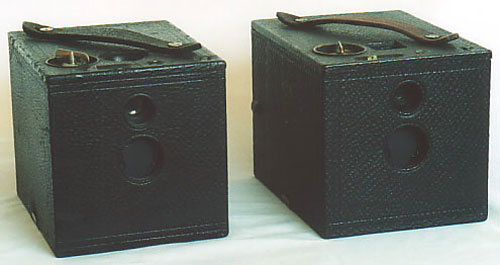
The Eastman Bullet Camera (right) made its debut in 1895.It was a copy of the earlier Bulls-Eye Camera (left), made by the Boston Camera Manufacturing Company.

A Filipino being executed by garrote, a strangulation machine, in 1898. The garrote consisted of a brass collar with a back piece pushed forward by the impulse of a big screw working through a post. When the executioner turned the handle of the screw, the back piece in the collar pressed against the top of the condemned's spine, thereby snapping the spinal cord.



An execution by garrote in Havana.

A cédula personal. Under the Spanish, it was illegal for a Filipino to go anywhere without carrying one.

A moro-moro play. Moro-moro was a traditional Filipino popular entertainment, often pitting Christians against Muslims. “Moro-moro” has come to mean something that is more show than substance.
juan tamad: “Lazy John”—a character in Philippine folklore noted for extreme laziness. In one story, he is buried by monkeys who think he is dead. The Philippine ilustrado class often disparaged peasant men by likening them to Juan Tamad. The American equivalent would be Joe Blow.


Interior, University of Santo Tomás.
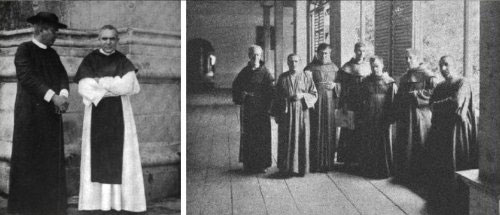
Franciscans.

Spanish friars of the Dominican Order, cir. 1880.


The Luneta in 1894. Between 1823 and 1897, 158 patriots and martyrs were executed on the Luneta promenade by the Spanish colonial administration.

Six Filipino rebels about to be executed, 1896 or 1897.

Puerta Real, Intramuros.
FIREWORKS
“Carnaval was invented by spies…”


A painting—“The Malecón on a Carnival Day.”



An anti-US Spanish cartoon.

Photo of Cuban children from a Spanish “reconcentration” camp. Used as pro-war propaganda in the US.
ambassador de lôme: In 1898, Enrique Dupuy de Lôme, the Spanish Minister with the Portfolio of Cuban Affairs at the Spanish Embassy in Washington, D.C., sent a private letter to his friend, Don Jose Canelejas. The letter was stolen and released by Cuban revolutionists to Hearst correspondents. In it, the minister wrote disparagingly of U.S. President William McKinley, and on February 9, the letter was published in the New York Journal, precipitating calls for military action against Spain.

An Abakuá dancer.


The Maine after the explosion.

The baseball squad from the USS Maine, which had just won the Navy baseball championship. The Maine's star was a black pitcher named William Lambert (upper right), an engine-stoker from Hampton, Virginia, who was described by one shipmate as "a master of speed, curves, and control." Other than the goat, which was left behind in Key West when the ship was ordered to Cuba, the lone survivor of the explosion was John Bloomer (upper left).
THE DAILY OUTRAGE
“The art of it lies in what first strikes the eye, and what that in turn stimulates in the mind of the reader…”



A cartoon depicting President McKinley attempting to keep the lid on congressional pressure for war.

A campaign poster for President McKinley. His campaign, designed by Mark Hanna, introduced new advertising-style techniques that revolutionized campaign practices and beat back the crusading of his opponent, William Jennings Bryan.
THE MARCH OF THE FLAG (I)
“A crowd of men have gathered in front of the Mondamin, listening to Jeff Smith up on a barrel of nails…”
the march of the flag: The “March of the Flag” was a speech by Senator Albert Beveridge opening the Indiana Republican Campaign on September 16, 1898. It was made the Republican campaign document for Indiana, Iowa, and other states, and was widely quoted and plagarized.

(Courtesy of the Soapy Smith Preservation Trust.)

(Courtesy of the Soapy Smith Preservation Trust.)


Dead Horse Gulch.
fitzhugh lee: Fitzhugh Lee (1835–1905) was the nephew of Robert E. Lee, and a Confederate cavalry general in the American Civil War. Upon the declaration of war between Spain and the United States he re-entered the army, becoming one of three ex-Confederate general officers made major generals of United States Volunteers. Fitzhugh Lee commanded the VII Army Corps, but took no part in the actual operations in Cuba. He was military governor of Havana and Pinar del Rio in 1899.

Skaguay military parade, 1899.

Soapy Smith’s white horse, preparing to lead the parade in Skaguay. Jeff Smith’s Parlor is also visible.
(Courtesy of the Soapy Smith Preservation Trust.)

Soapy Smith on July 7, 1898. Last known photo of Soapy alive.
(Courtesy of the Soapy Smith Preservation Trust.)

Dynamite Johnny O’Brien. After apprenticing as a pilot through the treacherous Hell’s Gate, O'Brien captained ships that brought arms and ammunition to Mexico for the Confederate Army, and to revolutionaries in Columbia, Haiti, and Cuba. A delivery of unstable dynamite to the latter earned him his nickname. (O’Brien neglected to let the crew know what their cargo was.)
joe boyle: Joe Whiteside Boyle was merchant seaman, businessman, and fight promoter before the Gold Rush lured him north in 1897. By 1909, he was in charge of one of the two corporate mining giants in the Klondike and became known as “The King of the Klondike.” With the outbreak of World War I in 1914, Joe left the Yukon and offered to finance and equip a machine-gun unit of fifty men for the Canadian Army. Too old to see active combat, he was given the honorary rank of lieutenant colonel. When America joined the war in 1917, Boyle embarked on a mission to get the Russian train system working. That winter, he became involved in the supply of food to starving, defeated Romanians, after which he arranged for Romania's crown jewels and archives to be moved to Moscow to keep them out of German hands. He later arranged for their return, and allegedly had an affair with Queen Marie of Romania.

George Bellows, A Stag at Sharkey’s. Lithograph.

The Czarina and the Dirigo at the wharves in Skaguay, 1898.
KINDLING
“In the drawing there are a half-dozen young men standing aimlessly, many with their hands in their pockets, as if in line for a free lunch…”


Skulls of concentration camp victims in Cuba.

Evangelina Cisneros was a beautiful seventeen-year-old sentenced by Spanish authorities to twenty years' imprisonment on the African coast for allegedly taking part in an uprising of political prisoners on the Isle of Pines. Cisneros was in Havana's Casa de Recojidas Prison, where she had been kept for ten months, when her plight was discovered by the New York Journal. William Randolph Hearst started a campaign of American women to try to secure her release. Julia Ward Howe, author of “The Battle Hymn of the Republic,” and Mrs. Jefferson Davis were enlisted to represent the women of the North and South in petitioning Spain's Queen Regent, Maria Christina, on behalf of the "Cuban Girl Martyr." On October 8th, the Journal broke the startling news that Evangelina had escaped—an escape engineered by Journal correspondent Karl Decker. Assisted by two accomplices, Decker had rented the house across the alley from Evangelina's cell, placed a ladder across the gap, cut the bars, and rescued the girl, who was whisked off in a carriage. The following day, disguised as a boy sailor, Evangelina boarded the Liner Seneca for the U.S., where she was presented to President McKinley.

A portrait of Joseph Pulitzer.


Senator Mark Hanna. Hanna was an industrialist and Republican politician from Cleveland, Ohio who rose to fame as the campaign manager for President McKinley in 1896. He is considered to be a major role model for Bush administration éminence grise Karl Rove.

SALVATION
“Hod rides the Utopia back to seattle with the other beaten men…”

Men in Coxey's Army. Jacob Sechler Coxey, a wealthy businessman from Massillon, Ohio, gained national prominence with his proposed cures for America's socioeconomic ills. He burst onto the national political scene in 1892 through his advocacy of the “Good Roads Bill,” which called for the issuance of $500 million in legal tender notes (he named one of his sons Legal Tender) that would, in turn, be used to employ the nation's surplus labor on road construction projects. The bill died in committee. In 1894, Coxey and his supporters unveiled the “Noninterest-Bearing Bonds Bill,” which would have authorized states and local governments to issue noninterest-bearing bonds that would be used to borrow funds for public-works projects from the federal treasury. Coxey called upon America's unemployed to travel to Washington and present the Congress with “a petition with boots on.” He departed for Washington himself on March 25, 1894, with one hundred men from Massillon, Ohio. The press, including a young Jack London, followed the march till it reached Washington on April 30, 1894, where Coxey and other leaders of the movement were arrested for walking on the grass of the United States Capitol. Among those observing the march was L. Frank Baum, whose book The Wonderful Wizard of Oz has often been interpreted as an allegory of Coxey's march.

bill hogan: “General” Bill Hogan, an unemployed teamster and member of the Western Federation of Miners from the Moulton Mine in Butte, Montana. led an offshoot of Coxey’s Army, commandeering several Northern Pacific freight engines to transport his fellow protestors across Montana. U/S/ infantry troops barricaded the line just west of present day Forsyth, stopped the train, arrested the men, and transported them to the jail at Helena. Of the six hundred or more volunteers who had filled the ranks of Hogan's Army, only the General and forty-two of his troopers were actually tried for seizing property without a proper warrant. In the end, William Hogan was sentenced to six months in jail, while the remainder of the defendants received thirty-day sentences.
 Miners’ Union hall, Butte, 1900.
Miners’ Union hall, Butte, 1900.

Butte, 1900.
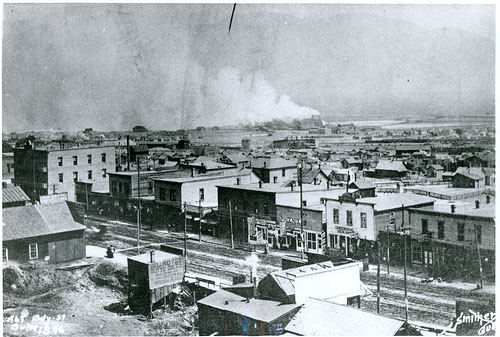
East Broadway, Butte, 1896.

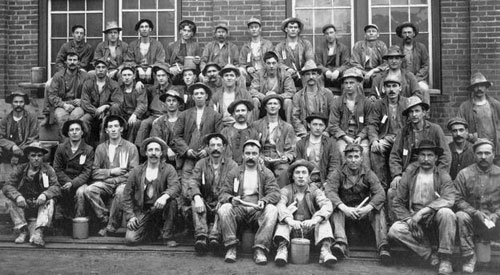
Miners, Butte, 1900.
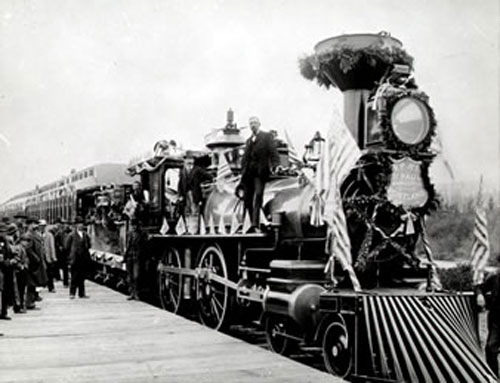
Northern Pacific train.
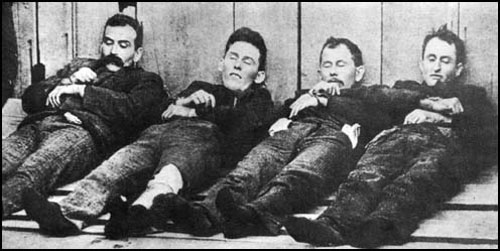
The Dalton Boys were a group of outlaw brothers active around the early 1890s, specializing in bank and train robberies. They were related to the Younger brothers, who rode with Jesse James.
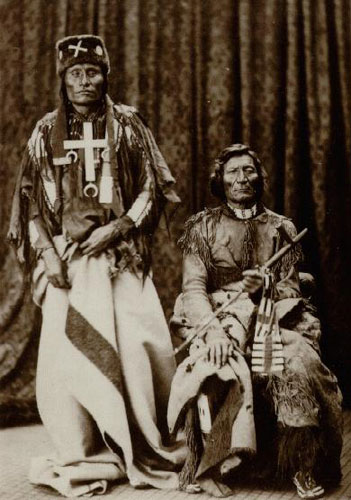
Little Wolf and Dull Knife. Dull Knife, or Morning Star, was a chief of the Northern Cheyenne people during the 19th century. Following Custer's Last Stand in 1876, Dull Knife allied with the Dakota and other tribes against the United States. However, after a raid by American soldiers in which 153 lodges were destroyed and 500 war ponies captured, most of the Cheyenne were eventually forced to surrender, and were transported to the Indian Territory in Oklahoma. Unable to hunt, the tribe suffered from starvation and disease until September 1878, when Dull Knife began to lead the tribe north back toward their ancient homelands. Fighting through, the Cheyenne were able to outmaneuver Federal troops in the Nebraska Sand Hills until they were captured near Fort Robinson in Nebraska. On January 8, 1879, the tribe again tried to escape north, and most, including Morning Star, were killed by Federal troops. Little Wolf helped lead the Cheyenne north in 1878, then split off with a separate group after they'd reached Nebraska. Little Wolf's group made its way to Montana, where there were eventually allowed to remain. He would later become a scout for the U.S. Army under Gen. Nelson A. Miles.

Yesler Avenue, Seattle.

The view from Seattle's Pioneer Square, looking north, up First Avenue.

Occidental Hotel, Seattle.

Christmas Eve at the Salvation Army.


Songsters.
PERISHABLE
“If the coolies are curious about Diosdado they don’t show it…”
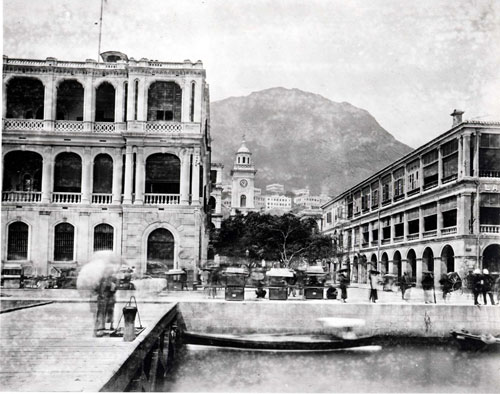
Pedder's Wharf, Hong Kong.

A dragon dancing its way along the Praya in Hong Kong, 1900.

Ice House Street, Hong Kong.
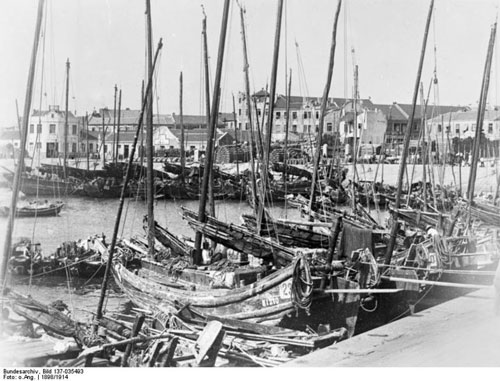
Chinese junks, 1898.

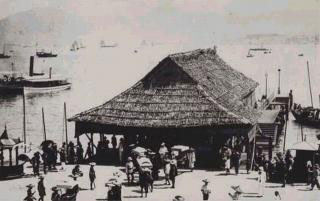
Blake’s Pier and Hong Kong Harbor.
WILMINGTON
“If Uncle Wicklow got any second thoughts about being a colored man’s colored man, he keeps quiet about it…”
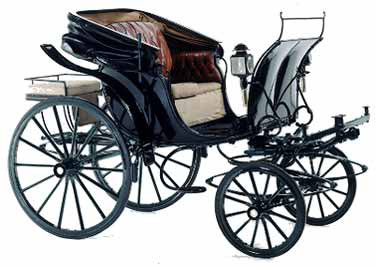
Park Phaeton carriage.

24th Regular Infantry marching to the train in Salt Lake City, en route to training camp.

The 25th Infantry leaving Missoula.
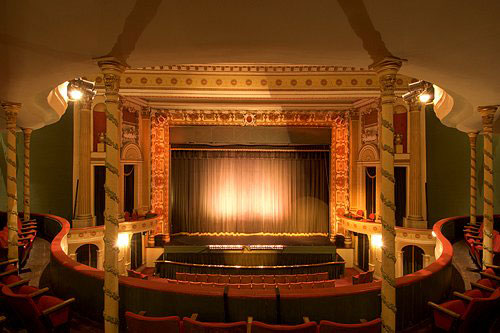
Interior, Thalian Hall, Wilmington.
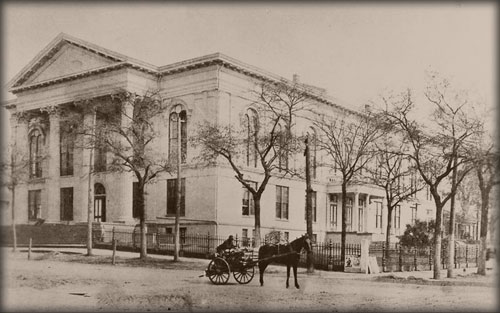
Thalian Hall exterior.
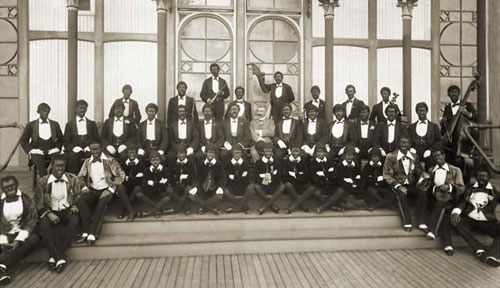
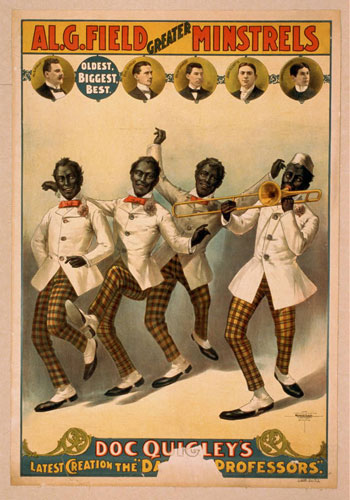
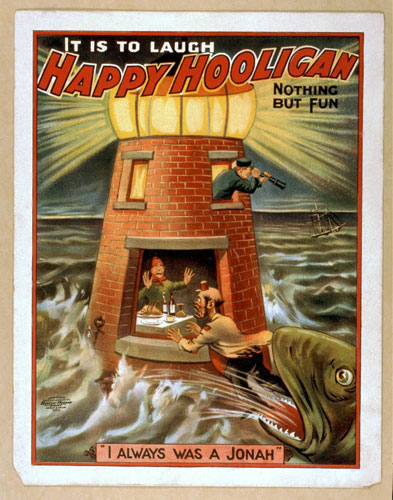

Buster Keaton (child) and parents doing an Irish routine, cir. 1903.
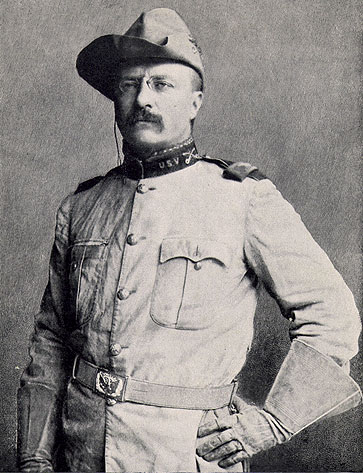
Colonel Theodore Roosevelt.
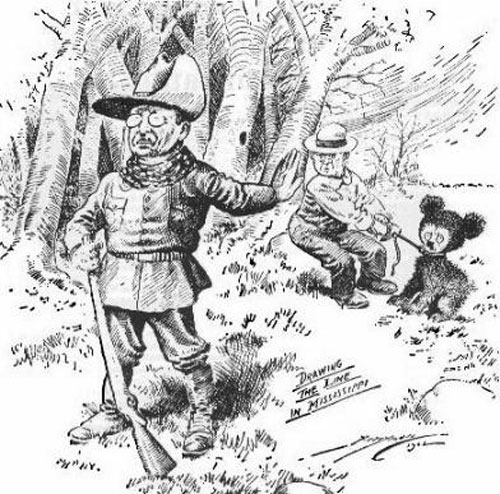
the bellamys: The son of a prominent local doctor, John Bellamy was a Wilmington lawyer and Congressman and close friend of future president Woodrow Wilson. He invited the White Government Union to use his law office for meetings.
the de rossets: One of Wilmington’s leading families. The Armand de Rosset house, on 3rd and Market, was used as the city’s Confederate headquarters during the Civil War.
mist’ miller: Thomas C. Miller was an African-American deputy sheriff, mail carrier, liquor dealer, coroner, realtor, and pawnbroker who loaned money to both blacks and whites in Wilmington. He was ordered out of town during the coup, and died in Virginia in 1903.
captain sigsbee: During the Civil War, Captain Charles D. Sigsbee was involved in the bombardment of Fort Fisher, which protected the Confederate blockade runners that operated out of Wilmington, NC. On Feb. 15, 1898, he was onboard the Maine as its commander. Sigsbee and the surviving crew abandoned the ship after the explosion.
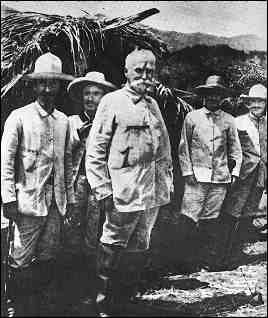
Calixto García e Iñiguez (1839–1898). García a general in three Cuban uprisings—the Ten Years' War, the Little War, and the War of ’95. During the Ten Years' War, surrounded by Spanish troops, he shot himself under the chin with a .45 caliber pistol. The bullet went out through his forehead and knocked him unconscious, but he survived. At the time of the U.S. landings in Cuba, García controlled the interior of old Oriente Province, and prepared the landing places for the U.S. Army near Santiago. His troops supported the Marine forces at Guantanamo, only to be denied entrance into Santiago de Cuba when the Spaniards surrendered.

Charlotte Brame. Brame was a writer of immensely popular love stories for the English lower class. She wrote under several pen names, and after her death those names were taken up by publishers to sell similar books by other authors.
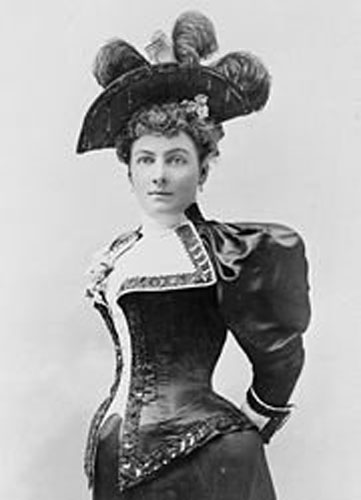
Laura Jean Libbey. Libbey was author of sensational dime-novel romances for women. In the course of her career, she completed eighty-two of them.
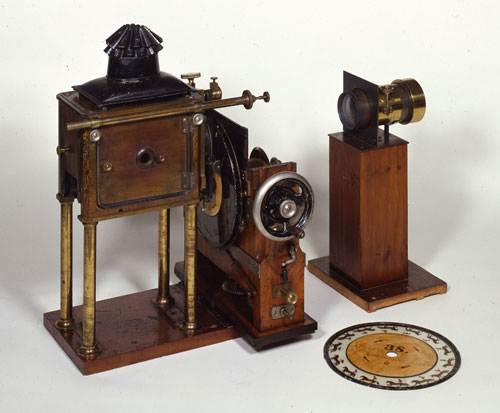
A zoopraxiscope.
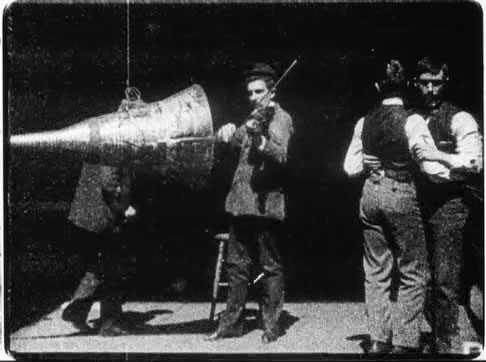
W. K. L. Dickson (with violin) in an early sound-film test. Dickson was an Anglo-Scottish inventor who devised an early motion-picture camera under the employ of Thomas Edison. Edison conceived of a device, the Kinetoscope, and Dickson, then the Edison company's official photographer, was assigned to turn the concept into a reality.


Harold P. Brown electrocuting a horse at Edison’s Menlo Park lab. Brown was an electrical engineer from Columbia University who, due to the accidental death of several colleagues, became a leading opponent of alternating current. Hired by Thomas Edison, who wished to promote his own direct current systems, Brown pioneered the use of AC to electrocute animals and eventually human beings. (Edison publicized the events to discredit his rival George Westinghouse, who had hired away former employee and AC inventor Nikola Tesla.) Brown is considered to be the inventor of the electric chair.
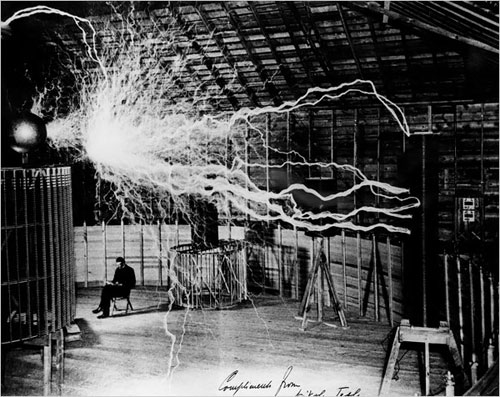
Nikolai Tesla, with electrical discharge.
paley:William “Daddy” Paley (1843–1924) was hired by Edison in March 1898, and took his first “war views” the same month, showing U.S. troops ready for embarkation in Florida. In June, he joined the dozens of journalists following the troops as they invaded Cuba, and was soon known among the war correspondents as “the Kinetoscope Man,” distinctive both for his own bulk and for the novel camera he operated. Within days his camera malfunctioned, and living out in the open, constantly soaked by the rain, he went down with fever and almost died on the voyage back to America.

Tableau representing Confederate and Union reconciliation to free Cuba.
TRAMPS
“Hod hacks at the chalky ground as tow-headed mormon boys crawl beside him…”

Blocking sugar beets.

A sugar beet refinery.

The Denver and Rio Grande railroad.

The D&RG in Glenwood Canyon.
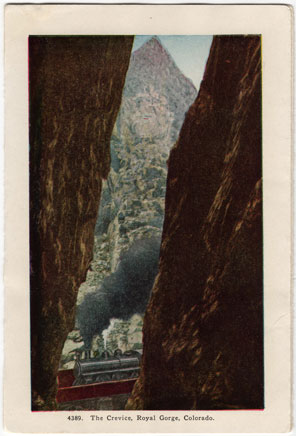

A passenger pigeon. Passenger pigeons lived in enormous migratory flocks that could sometimes take several hours to pass overhead. The species went from being one of the most abundant birds in the world, during the 19th century, to extinction early in the 20th century. The primary factor behind the decline was the commercialization of pigeon meat as a cheap food for slaves and the poor in the 19th century. Martha, thought to be the world's last passenger pigeon, died on September 1, 1914, at the Cincinnati Zoo.

Martha, the last passenger pigeon.

“Custer's Last Fight,” one of the most famous depictions of the Battle of the Little Bighorn, originally painted on a wagon canvas by Cassilly Adams in 1884, eight years after the battle. The painting from which this lithograph was made was created by F. Otto Becker in 1889 and licensed by the Anheuser-Busch Co. to distribute to saloons all over the country as advertisements for Budweiser beer.

Chief Buffalo. Recognized as the principal chief of the Lake Superior Chippewa (Ojibwa) for nearly a half-century until his death in 1855, Chief Buffalo led his nation into a treaty relationship with the U.S. and was instrumental in resisting the efforts of the United States to remove the Ojibwa from their territory near Lake Superior. A small tract of land was ultimately set aside for Chief Buffalo and his family at Buffalo Bay, on the mainland across from Madeline Island. In 1855, this settlement at the “Buffalo Estate” was extended by executive order into what is now called the Red Cliff Indian Reservation.

An Ojibwa family.




Printing Room, Carlisle School, 1901.

The Carlisle band.
OUR "BOYS" AT CAMP
“The game is friendly till the ladies arrive…”

Colonel Andrew Burt as a young officer. Burt was a veteran of the Union Army, and became commanding officer of the 25th Infantry in 1892. He was promoted to Brigadier General of Volunteers while the 25th was stationed in Tampa, awaiting transport to the fight in Cuba. He served as commander of the training camp in Chickamauga throughout the Spanish–American War, rejoining the 25th as a colonel in time for the Philippine–American War, commanding Zambales Province. He was promoted to Brigadier General just before his retirement in 1902.








THE YELLOW KID
“The game is friendly till the ladies arrive…”










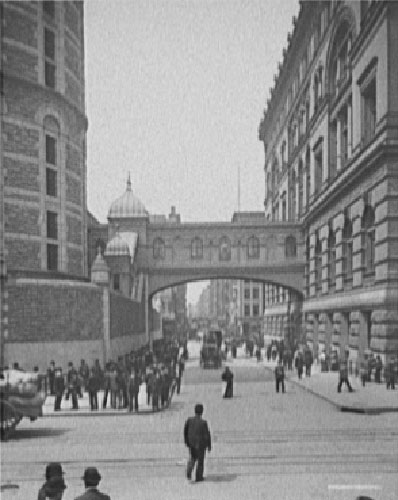
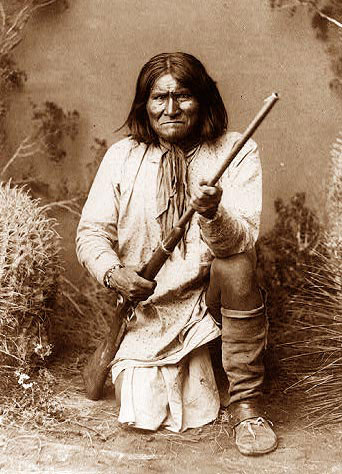






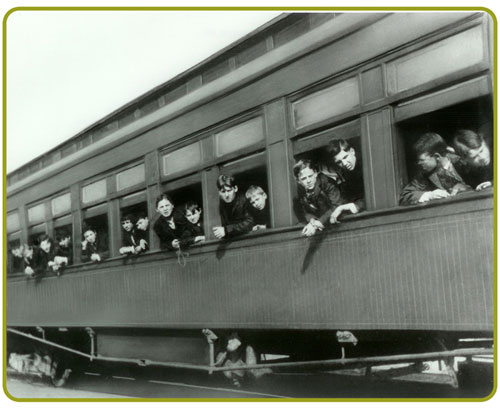
EXILE
“Wu sits back among the crates as his assistant pores over a page of sums, clacking an abacus…”

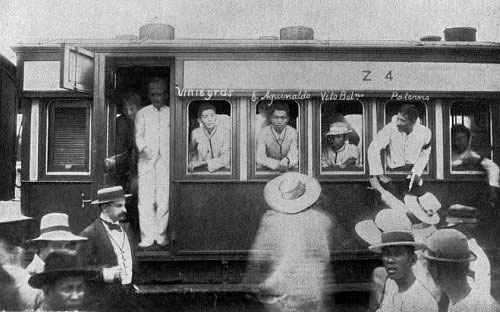
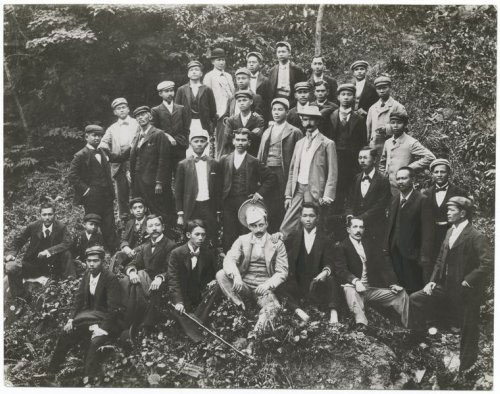


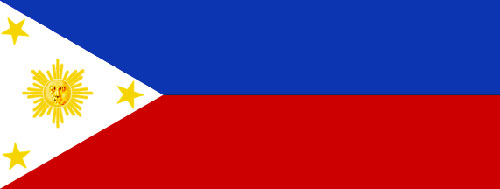

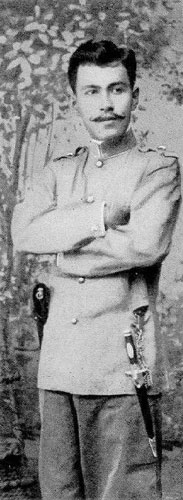
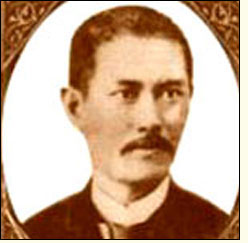
THE CLOUD CITY
“Leadville is a wound festering between the Mosquito Range and the Wasatch Mountains, a high-plains sprawl of new-built
structures surrounded by treeless hills pocked with diggings, hills that at closer look are only piles of tailings excreted from the holes men
have torn into the earth…”
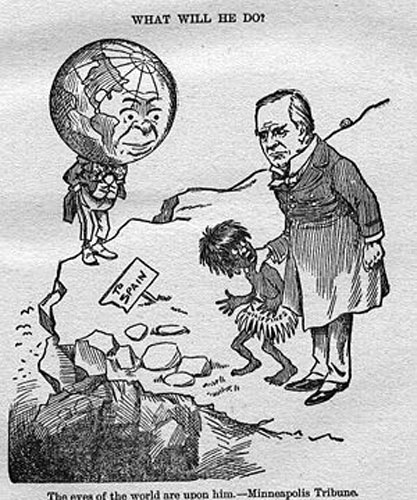
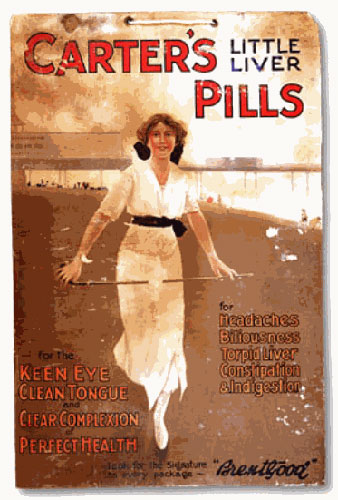

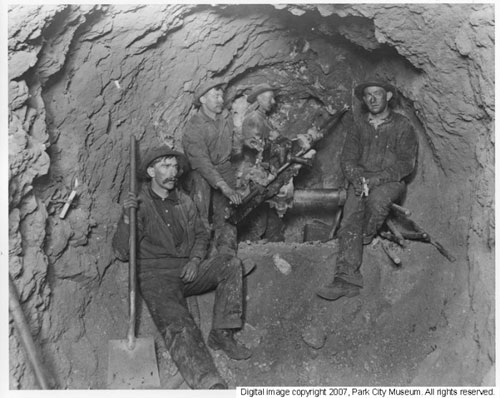
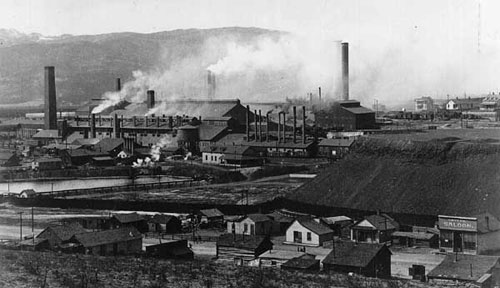
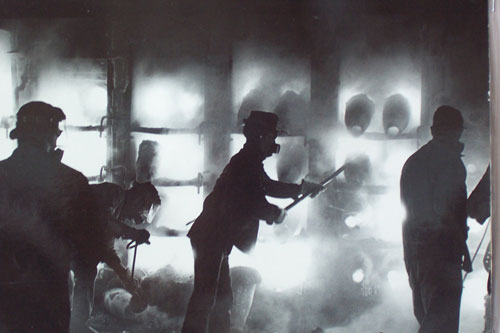
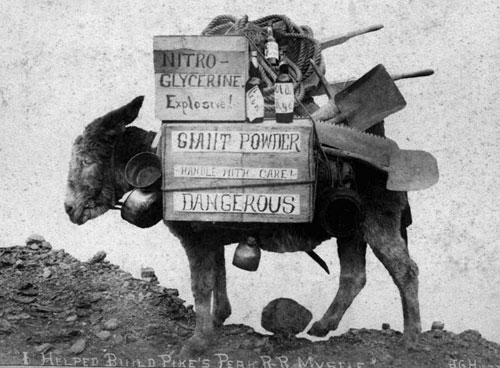
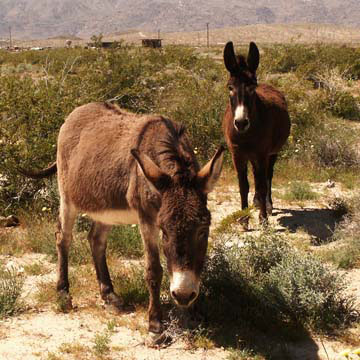
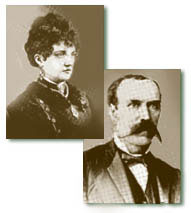
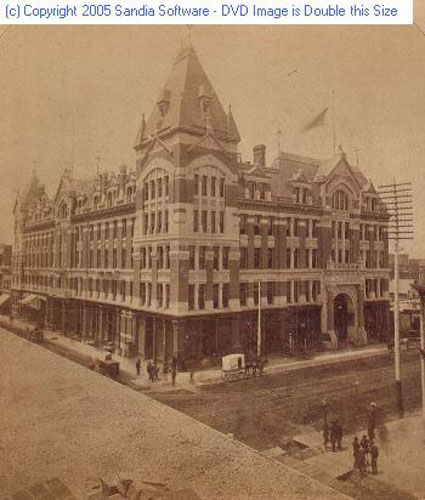
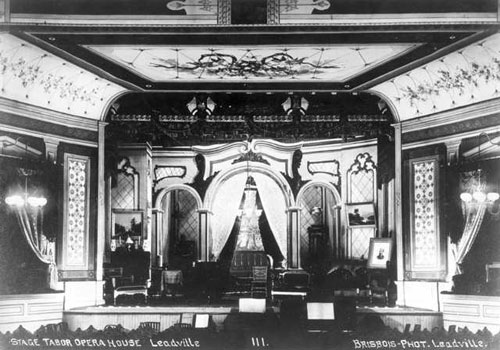

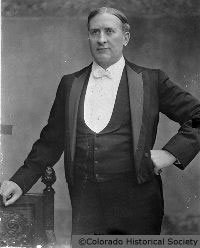
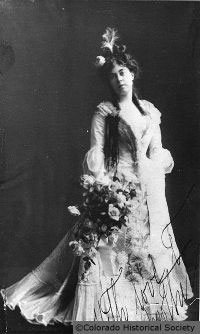

ERRATUM
“Here we scribe truth in hot lead…”



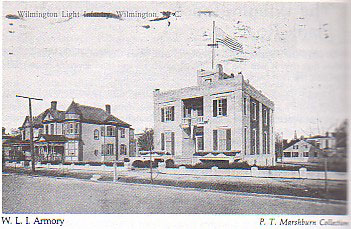

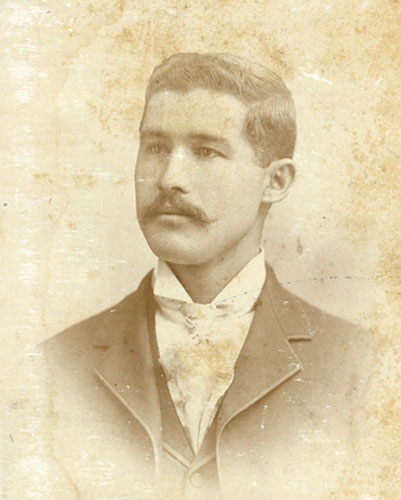
VOLUNTEERS
“In Denver they don’t make him undress…”
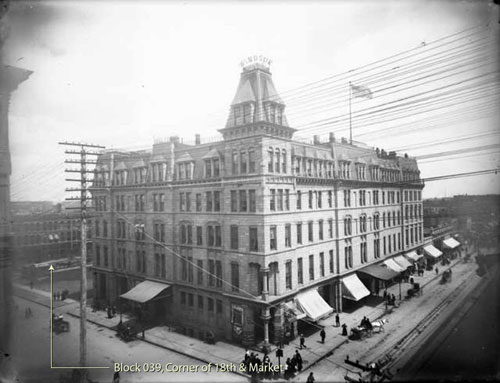

(Courtesy of the Soapy Smith Preservation Trust.)

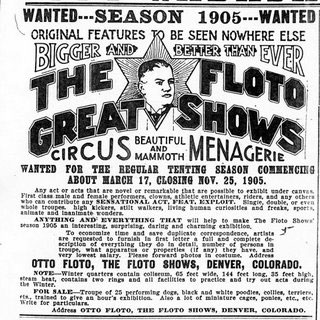
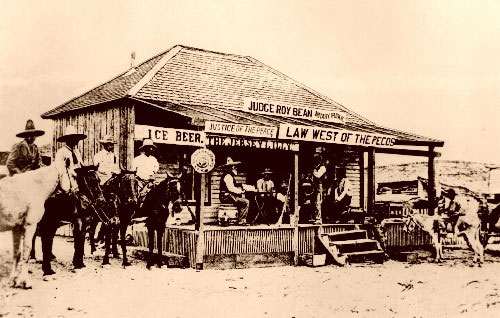
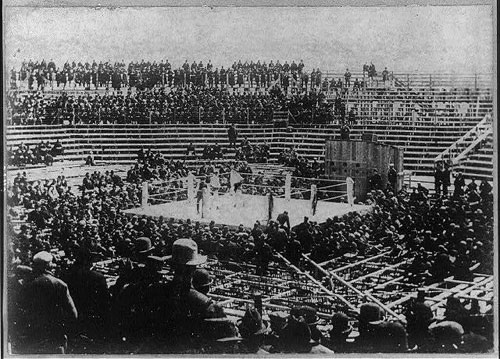
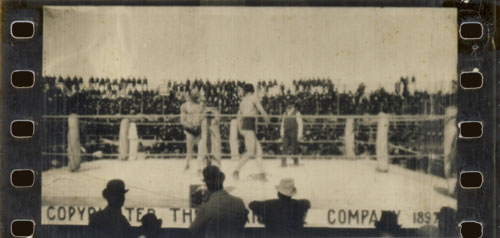
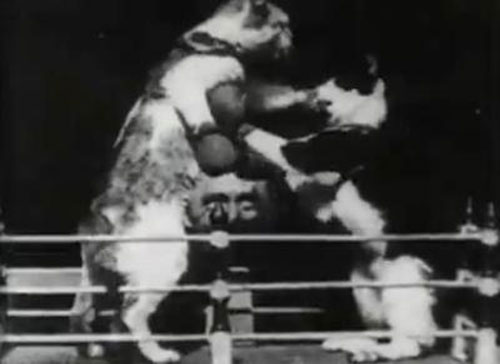
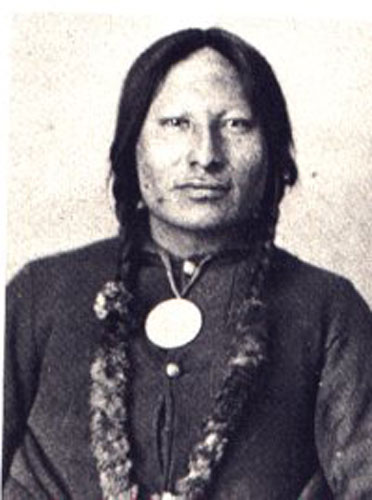
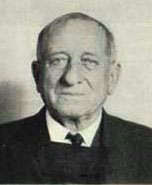

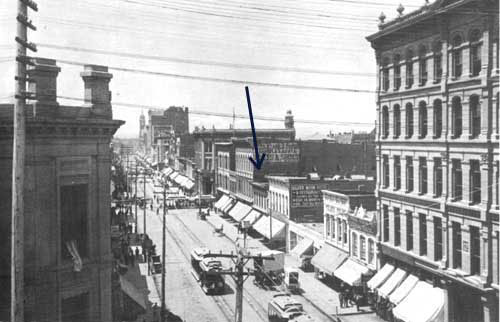
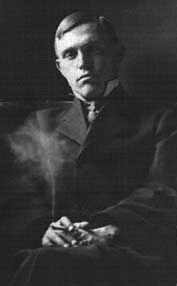
ARMADA
“The Americans are there before the sun comes up…”
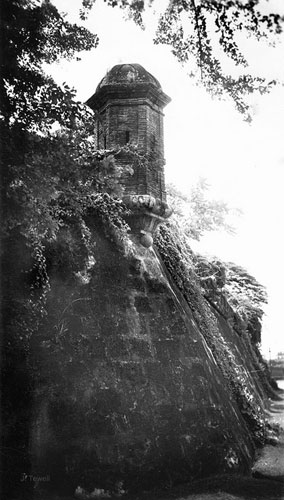



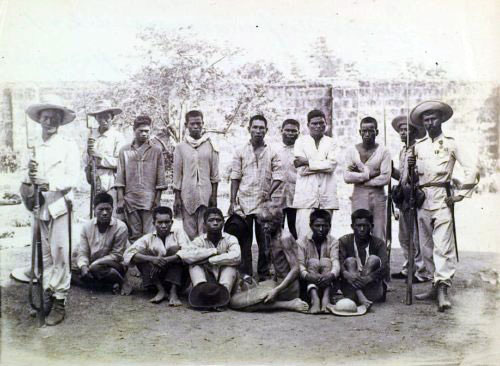


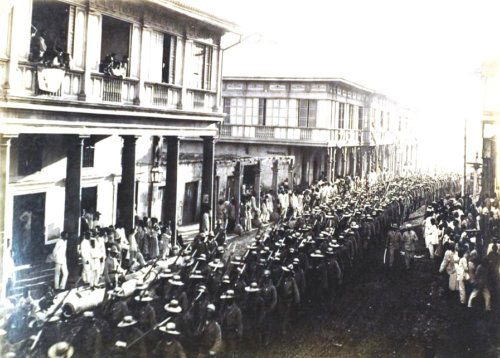
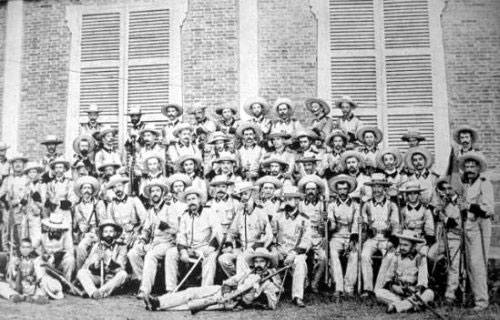
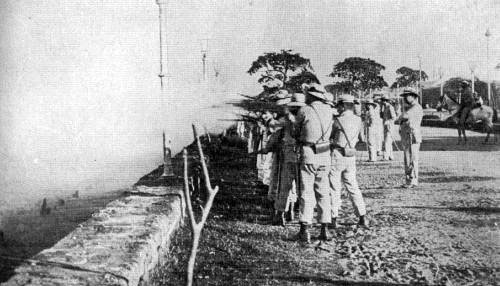

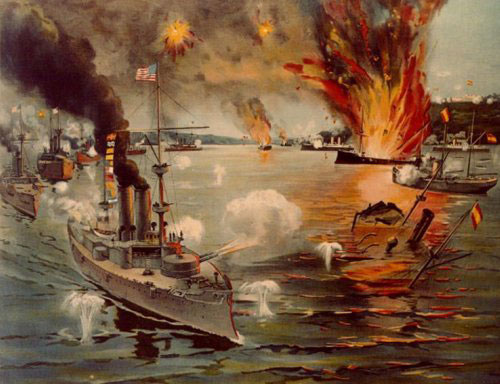
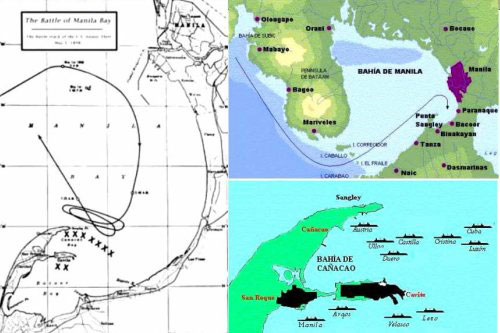
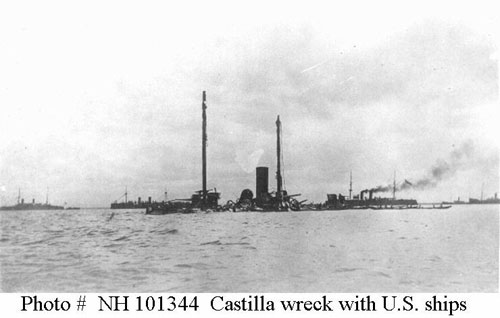
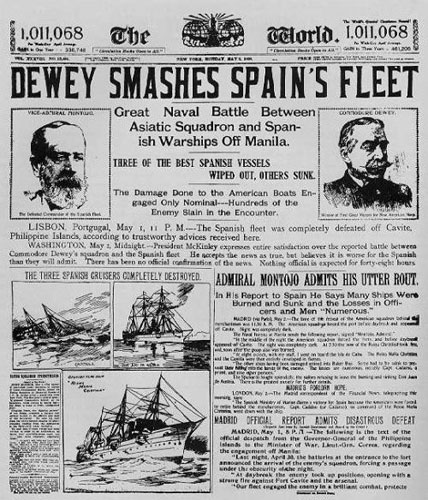
READER
“Quiroga sits on his platform, surveying the bowed heads below…”
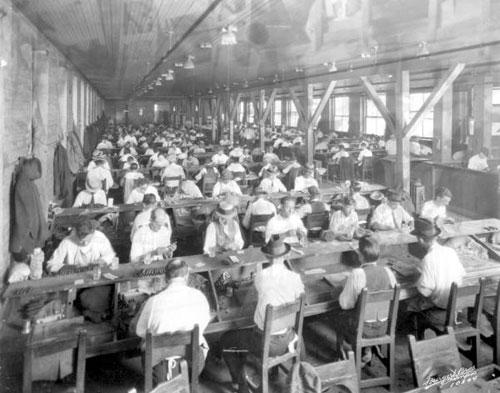
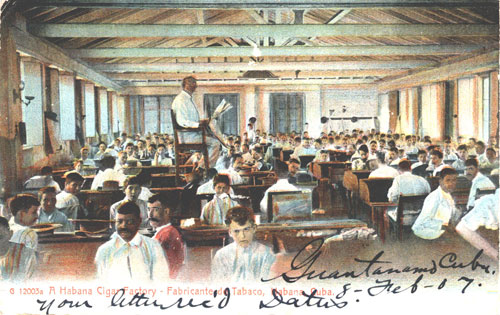
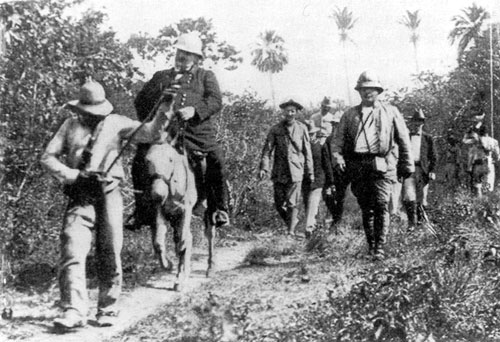

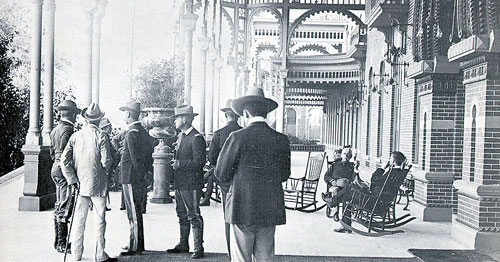




A GENTLEMAN’S AGREEMENT
“The White Admiral sits in a wicker chair in his quarters on the flagship of the victorious Fleet…”

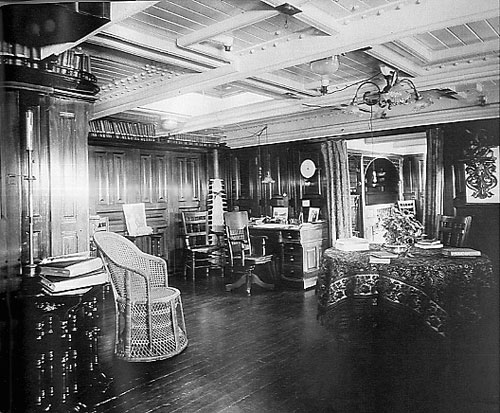
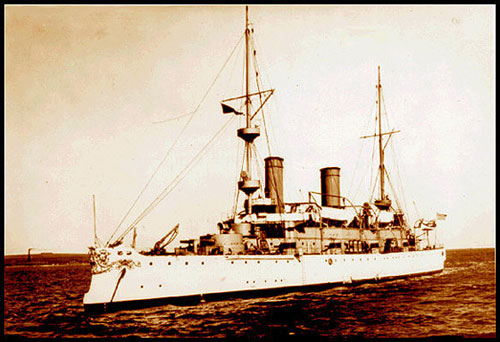

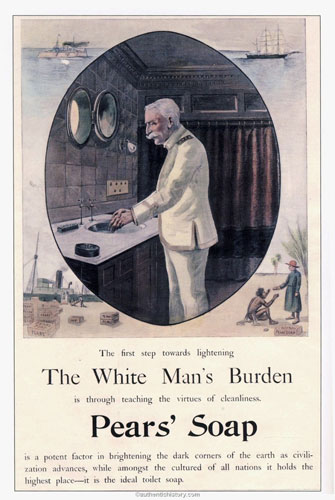
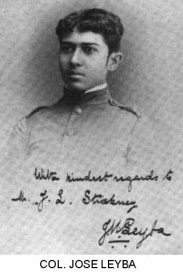
THE LOST WORLD
“Tampa is a fever dream…”













CAMP ALVA
“Hod looks up from the chow line at Camp Alva Adams and can see the flophouse he stayed in the night before he enlisted…”



A MOMENT IN THE SUN
BOOK ONE
GOLD FEVER
“Hod is the first on deck to see smoke…”









cheechako: “Newcomer,” in Chinook Indian trade jargon.










LIGHTNING
“There is some folks say the pine air is good for you but Clarence is not one of them…”





carolina special: A train, powered by a green-and-gold-trimmed steam locomotive, which ran from Charleston, SC to Cincinnati, OH. It consisted of mail and baggage cars, coaches, a diner and Pullmans. In 1904 the Carolina Special collided head-on with a local train in New Market, Tennessee. More than one hundred people were killed.
FORT MISSOULA
“The only part that bothers Royal is when the doctor sits on the stool to stare into the hole in the head of his pizzle…”
fort missoula: Fort Missoula was established by the United States Army in 1877, on land that is now part of the city of Missoula, Montana, in order to protect white settlers in Western Montana from possible threats from the area's Native American tribes (such as the Nez Perce). Beginning in 1888, the fort was home to the Buffalo Soldiers of the 25th Infantry Regiment. While stationed at Fort Missoula, the 25th Infantry tested the practicality of soldiers traveling by bicycle by conducting numerous training rides, including one that took them all the way to St. Louis, Missouri. Fort Missoula was turned over to the Department of Immigration and Naturalization in 1941 for use as an alien detention center for non-military Italian men (merchant seamen, World's Fair employees, and the crew of an Italian luxury liner seized in the Panama Canal). At one time the fort housed over 1,200 Italian internees, who referred to the fort as “Camp Bella Vista.”





sprunt’s: James Sprunt was a textile magnate in Wilmington, NC, who with his brother William owned the largest cotton-brokerage firm in the U.S. at the turn of the century. He had been a purser on the Confederate blockade-runner Lilian during the Civil War.


hampton institute: The Hampton Normal and Agricultural Institute was founded in 1868 by General Samuel Armstrong. He was interested in moral training and a practical, industrial education for Southern blacks. Hampton received much of its financial support in the years following the Civil War from church groups and former officers and soldiers of the Union Army. One of the many Civil War veterans who gave substantial sums to the school was General William Jackson Palmer, a Union cavalry commander and Quaker from Philadelphia, who later built the Denver and Rio Grande Western Railroad and founded Colorado Springs, Colorado.
IN THE TEMPLE
“In the last few years it has been the Italians, Guglielmo Tell mostly, or Un Ballo in Maschera, or something new by Puccini…”
bundoks: Tagalog word for “mountains.” Became corrupted by American soldiers into “boondocks”—any distant posting.
the intramuros: Located along the southern bank of the Pasig River, the Intramuros is Manila's oldest district, having been built by the Spaniards in the sixteenth century. Its name means “within the walls”; the district is surrounded by thick, high walls and moats. During the Spanish colonial period, the Intramuros was considered Manila itself.




teatro zorilla: The Teatro Zorilla was located at the corner of Calle San Pedro (now Evangelista) and Calle Azcarraga (now Recto) in Manila. Many Italian companies performed at the Zorilla, which closed during the early years of the Philippine-American War, but soon reopened, often presenting seditious zarzuelas to protest American rule.
katipunan: The Katipunan was a Philippine revolutionary society founded by anti-Spanish Filipinos in Manila in 1892. Initially, the Katipunan was a secret organization; its discovery in 1896 helped lead to the outbreak of the Philippine Revolution.
dr. rizal: José P. Rizal (1861-1896) was the leading advocate for reform in the Philippines during the Spanish colonial era. He was an accomplished linguist, ophthalmologist, sculptor, painter, educator, farmer, historian, playwright, journalist, poet, essayist, and novelist, whose most famous works are the novels Noli me Tangere (1887) and El Filibusterismo (1891), which inspired dissent among reformers and revolutionaries. On his return to Manila from university in Europe in 1892, Rizal founded La Liga Filipina, a predecessor of the more radical Katipunan. The league advocated moderate social reforms through legal means, but was quickly disbanded by the governor. Rizal had already been declared an enemy of the state because of the publication of his novels, and in 1892 he was exiled from Manila. In 1896, as the rebellion fomented by the Katipunan became a full-blown revolution, Rizal issued a manifesto disavowing the unrest and declaring that the education of Filipinos and their achievement of a national identity were prerequisites to freedom. He volunteered to serve the Spanish Army as a physician in Cuba, but instead he was arrested and sent to Manila to stand trial. On the morning of December 30, 1896, Rizal, thirty-five years old, was shot to death by a firing squad at Bagumbayan Field.







hermano terrible: In the Masonic order, the hermano terrible is the man who guides a neophyte through his initiation ceremony. Emilio Aguinaldo, Andrés Bonifacio and José Rizal were all Freemasons.
ateneo: The Ateneo de Manila University is a private Jesuit-run university in Manila. It was created in 1859, when the City of Manila handed control of the Escuela Municipal de Manila to the Jesuits. After the U.S. began to occupy the Philippines in the early 1900s, the Ateneo lost its government subsidy and became a private institution.

correo de ultramar: A radical Manila newspaper.
the hero of paombong: Gregorio del Pilar y Sempio (1875-1899) was the second youngest general in the Philippine Revolutionary Forces during the Philippine Revolution and the Philippine-American War. On September 3, 1897, del Pilar disguised himself and ten other soldiers as women, entered the town of Paombong unhindered, attacked the Spanish garrison, and confiscated fourteen Mauser rifles. This feat caught the attention of General Aguinaldo, who invited del Pilar to join the circle of revolutionary leaders camped at Biak-na-Bato. When the Philippine-American War broke out on February 1899, del Pilar led his troops to a short victory over Major Franklin Bell in the first phase of the Battle of Quingua, but subsequent engagements against the Americans all ended in defeat. On December 2, 1899, del Pilar led sixty Filipino soldiers against the Texas Regiment (the 33rd Infantry Regiment) in the Battle of Tirad Pass, a delaying action to cover a retreat by Aguinaldo. The five-hour standoff resulted in del Pilar's death after he was shot in the neck.

SKAGUAY
“Hod is working on the wagon road three miles out of skaguay, felling trees and dragging logs through the mud with a chain rig, when a dude strolls up with the road boss…”











(Courtesy of the Soapy Smith Preservation Trust.)


(Courtesy of the Soapy Smith Preservation Trust.)




(Courtesy of the Soapy Smith Preservation Trust.)

(Courtesy of the Soapy Smith Preservation Trust.)
A SHAVE AND A HAIRCUT
“White folks’ hair is easy…”


governor russell: Governor Daniel Lindsay Russell, Jr. (1845–1908) was the Republican governor of North Carolina from 1897 to 1901. In the 1898 election, Russell and the Republicans joined with the Populists in a combined fusion party, but the persistent and effective white-supremacy campaign waged by the Democrats drowned out nearly all other issues. Russell, who had served as a captain in the Confederate Army during the Civil War, issued a proclamation criticizing attacks associated with the Red Shirts and calling for a peaceful election. On November 8, he traveled home to Wilmington and cast his ballot without incident, but he barely made it back to Raleigh. A group of armed Red Shirts boarded the train at Hamlet looking for the governor, but Russell had been tipped off and was hiding in the baggage car.


the redeemers: The Redeemers were a political coalition in the South during the Reconstruction era. They were the Southern wing of the Bourbon Democrats, who were the conservative, pro-business wing of the Democratic Party. Once in power, they typically cut government spending, shortened legislative sessions, lowered politicians’ salaries, scaled back public aid to railroads and corporations, and reduced support for public education. They also worked to change voter registration rules to strip most blacks and many poor whites of their ability to vote.
scalawag: Scalawag was a nickname for Southern whites who supported Reconstruction following the Civil War. Joseph E. Worcester’s 1860 Dictionary of the English Language defined scalawag as "A low worthless fellow; a scapegrace." Scalawag was also a word for low-grade farm animals.

COMMERCE
“Here's Soapy's other n-----…”









SOJOURNER
“Father, please forgive the tardiness of my correspondence, but we have been in transitu of late and the regular mail schedule is not in effect…”




sgt. mingo sanders: Mingo Sanders, born in Marion, SC, enlisted in the Army on May 16, 1881, and arrived in Missoula with Company B of the 25th Infantry in 1888. Partially blind from an explosion, he was the oldest and most experienced member of the Bicycle Corps at age 39. In the Spanish–American War, Sanders helped capture the Spanish-held fort of El Viso near El Caney, then served in the Philippines. He received the Medal of Honor after rescuing five American prisoners.

EASTMAN BULLET
“The screw is supposed to sever your spine at the base of the neck before you are choked by the collar…”







juan tamad: “Lazy John”—a character in Philippine folklore noted for extreme laziness. In one story, he is buried by monkeys who think he is dead. The Philippine ilustrado class often disparaged peasant men by likening them to Juan Tamad. The American equivalent would be Joe Blow.








FIREWORKS
“Carnaval was invented by spies…”






ambassador de lôme: In 1898, Enrique Dupuy de Lôme, the Spanish Minister with the Portfolio of Cuban Affairs at the Spanish Embassy in Washington, D.C., sent a private letter to his friend, Don Jose Canelejas. The letter was stolen and released by Cuban revolutionists to Hearst correspondents. In it, the minister wrote disparagingly of U.S. President William McKinley, and on February 9, the letter was published in the New York Journal, precipitating calls for military action against Spain.




THE DAILY OUTRAGE
“The art of it lies in what first strikes the eye, and what that in turn stimulates in the mind of the reader…”




THE MARCH OF THE FLAG (I)
“A crowd of men have gathered in front of the Mondamin, listening to Jeff Smith up on a barrel of nails…”
the march of the flag: The “March of the Flag” was a speech by Senator Albert Beveridge opening the Indiana Republican Campaign on September 16, 1898. It was made the Republican campaign document for Indiana, Iowa, and other states, and was widely quoted and plagarized.




fitzhugh lee: Fitzhugh Lee (1835–1905) was the nephew of Robert E. Lee, and a Confederate cavalry general in the American Civil War. Upon the declaration of war between Spain and the United States he re-entered the army, becoming one of three ex-Confederate general officers made major generals of United States Volunteers. Fitzhugh Lee commanded the VII Army Corps, but took no part in the actual operations in Cuba. He was military governor of Havana and Pinar del Rio in 1899.


(Courtesy of the Soapy Smith Preservation Trust.)

(Courtesy of the Soapy Smith Preservation Trust.)

joe boyle: Joe Whiteside Boyle was merchant seaman, businessman, and fight promoter before the Gold Rush lured him north in 1897. By 1909, he was in charge of one of the two corporate mining giants in the Klondike and became known as “The King of the Klondike.” With the outbreak of World War I in 1914, Joe left the Yukon and offered to finance and equip a machine-gun unit of fifty men for the Canadian Army. Too old to see active combat, he was given the honorary rank of lieutenant colonel. When America joined the war in 1917, Boyle embarked on a mission to get the Russian train system working. That winter, he became involved in the supply of food to starving, defeated Romanians, after which he arranged for Romania's crown jewels and archives to be moved to Moscow to keep them out of German hands. He later arranged for their return, and allegedly had an affair with Queen Marie of Romania.


KINDLING
“In the drawing there are a half-dozen young men standing aimlessly, many with their hands in their pockets, as if in line for a free lunch…”







SALVATION
“Hod rides the Utopia back to seattle with the other beaten men…”


bill hogan: “General” Bill Hogan, an unemployed teamster and member of the Western Federation of Miners from the Moulton Mine in Butte, Montana. led an offshoot of Coxey’s Army, commandeering several Northern Pacific freight engines to transport his fellow protestors across Montana. U/S/ infantry troops barricaded the line just west of present day Forsyth, stopped the train, arrested the men, and transported them to the jail at Helena. Of the six hundred or more volunteers who had filled the ranks of Hogan's Army, only the General and forty-two of his troopers were actually tried for seizing property without a proper warrant. In the end, William Hogan was sentenced to six months in jail, while the remainder of the defendants received thirty-day sentences.














PERISHABLE
“If the coolies are curious about Diosdado they don’t show it…”






WILMINGTON
“If Uncle Wicklow got any second thoughts about being a colored man’s colored man, he keeps quiet about it…”











the bellamys: The son of a prominent local doctor, John Bellamy was a Wilmington lawyer and Congressman and close friend of future president Woodrow Wilson. He invited the White Government Union to use his law office for meetings.
the de rossets: One of Wilmington’s leading families. The Armand de Rosset house, on 3rd and Market, was used as the city’s Confederate headquarters during the Civil War.
mist’ miller: Thomas C. Miller was an African-American deputy sheriff, mail carrier, liquor dealer, coroner, realtor, and pawnbroker who loaned money to both blacks and whites in Wilmington. He was ordered out of town during the coup, and died in Virginia in 1903.
captain sigsbee: During the Civil War, Captain Charles D. Sigsbee was involved in the bombardment of Fort Fisher, which protected the Confederate blockade runners that operated out of Wilmington, NC. On Feb. 15, 1898, he was onboard the Maine as its commander. Sigsbee and the surviving crew abandoned the ship after the explosion.








paley:William “Daddy” Paley (1843–1924) was hired by Edison in March 1898, and took his first “war views” the same month, showing U.S. troops ready for embarkation in Florida. In June, he joined the dozens of journalists following the troops as they invaded Cuba, and was soon known among the war correspondents as “the Kinetoscope Man,” distinctive both for his own bulk and for the novel camera he operated. Within days his camera malfunctioned, and living out in the open, constantly soaked by the rain, he went down with fever and almost died on the voyage back to America.

TRAMPS
“Hod hacks at the chalky ground as tow-headed mormon boys crawl beside him…”















OUR "BOYS" AT CAMP
“The game is friendly till the ladies arrive…”









THE YELLOW KID
“The game is friendly till the ladies arrive…”



















EXILE
“Wu sits back among the crates as his assistant pores over a page of sums, clacking an abacus…”









THE CLOUD CITY
“Leadville is a wound festering between the Mosquito Range and the Wasatch Mountains, a high-plains sprawl of new-built structures surrounded by treeless hills pocked with diggings, hills that at closer look are only piles of tailings excreted from the holes men have torn into the earth…”















ERRATUM
“Here we scribe truth in hot lead…”






VOLUNTEERS
“In Denver they don’t make him undress…”













ARMADA
“The Americans are there before the sun comes up…”















READER
“Quiroga sits on his platform, surveying the bowed heads below…”









A GENTLEMAN’S AGREEMENT
“The White Admiral sits in a wicker chair in his quarters on the flagship of the victorious Fleet…”






THE LOST WORLD
“Tampa is a fever dream…”













CAMP ALVA
“Hod looks up from the chow line at Camp Alva Adams and can see the flophouse he stayed in the night before he enlisted…”



